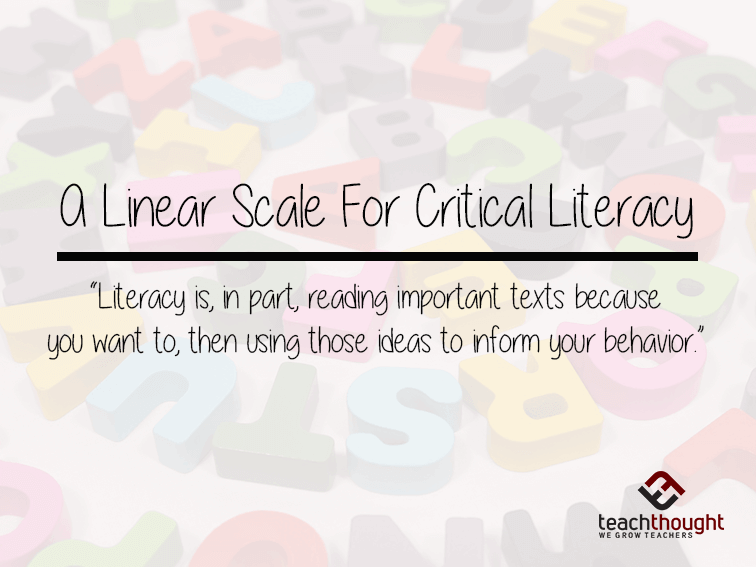
Some Thoughts On The Humble Building Blocks Of Knowledge
by Terry Heick
Phonemic awareness is knowing that certain letters make certain sounds.
Phonemic awareness is knowing that sounds can blend together in predictable and unpredictable ways.
Phonemic awareness is about loving the sounds that letters can make, then noticing common patterns across symbols, media, and languages.
Phonemic awareness makes decoding possible.
Decoding is being able to blend sounds together to ‘make’ words you recognize.
Decoding is collecting as many words as possible into your ‘sight word bank’ to increase your reading speed and comprehension.
Decoding is recognizing common word parts used in many words and using knowledge of those parts to predict the meaning of unfamiliar words.
Decoding enables comfortable reading speeds and oral fluency.
Decoding makes literacy possible.
Literacy is about comfortable reading speeds, sufficient background knowledge to make sense of embedded ideas, and syntax.
Literacy means understanding that the order of words in a sentence affects meaning (and includes a basic grasp of grammar categories).
Literacy is about knowing how punctuation can enhance meaning.
Literacy is choosing to read a variety of authentic texts and digital media for a variety of authentic purposes.
Literacy is thinking about what you read after you’re done, then sharing what you read with others.
Literacy is, in part, reading important texts because you want to, then using those ideas to inform your behavior.
When practiced well, literacy breaks down who we were to create who we might become.
See also The Definition Of Critical Reading
Literacy makes critical literacy possible.
Critical literacy begins with being able to decode a text, and then analyze it for meaning, implicit and explicit themes, the relationship of a text to a given perspective, existing texts, biases, and so on.
Critical literacy is about a text and the motives of the people behind the text. (Critical literacy might insist that authors cannot be separated from what they write in the same way as one’s ‘self’ should be seen as indistinguishable from one’s work.)
Critical literacy is also about understanding how what we read and consume affects us. Critical literacy, then, suggests we become critical consumers of any given media. Think: What am I ‘consuming’, and what might I do as a result?
See also: Stop Worrying About Screen Time
Critical literacy, further, means understanding the potential human value of a text or digital media–value to people rather than ‘literary canons’ and purely academic pursuits.
Critical literacy means understanding the relationship between seemingly disparate media forms (e.g., books, social media, music, etc) as examples of human expression.
Critical literacy is also about creating--writing, socially sharing, remixing, etc. (Reading and writing should be seen as two hemispheres of the same sphere.)
Critical literacy, now more than ever, recognizes that human expression depends on prevailing local technology. As that technology changes, so do communication patterns. One things impacts another.
Critical literacy makes cultural literacy possible.
Cultural literacy is, in part, about acquiring knowledge and perspective that helps us create that which is worth creating, and realizing that answer is different for everyone.
Cultural literacy can support cultivating genius, disrupting inequalities, creating sustainable systems, emphasizing our cultural memberships, and seeing our own role in the various natural, digital, and human ecologies we are a part of. (Digital citizenship, for example.)
Cultural literacy depends on our knowing who’s said what and why–which messages and themes and ideas persist within them. This means we have to read, understand what we read, critically examine what we read, and use those lessons to inform our behavior.
To do this we have to choose to read.
To choose to read, we have to be able and choose to closely scrutinize texts and digital media.
To do this, we have to know what words mean–what they really, really mean.
To do this, we have to know that in digital media, modalities (e.g., light, color, sound) are symbols just like letters are symbols in texts, and these symbols–if we’re attendant to those sounds and the possibilities–can change the world.
Sounds lead to words, words lead to ideas, ideas lead to perspectives, perspectives lead to behavioral change, behavioral change–if done critically–leads to a better world.